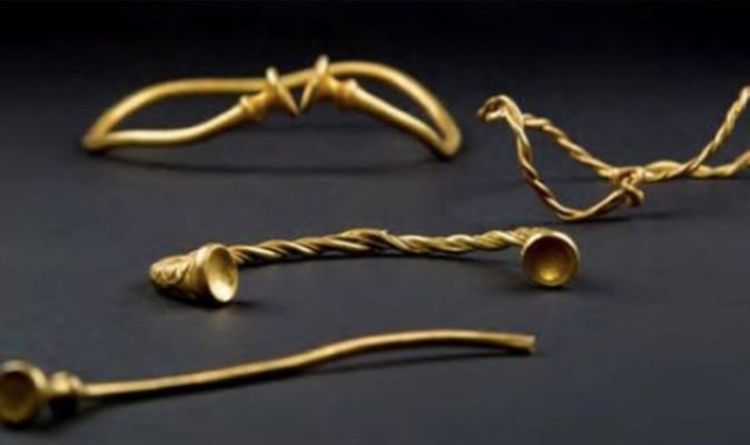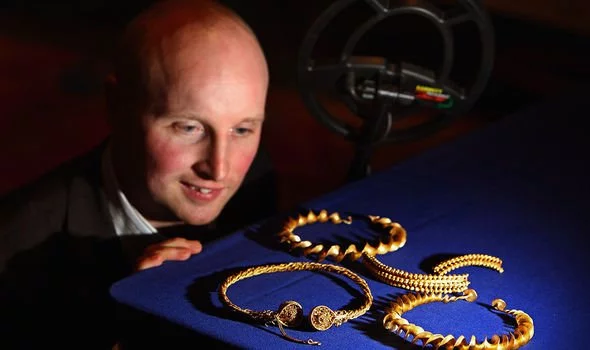Researchers left ‘speechless’ by ‘magical’ Iron Age treasure
Archaeologists were stunned when they unearthed Iron Age treasure owned by extremely wealthy figures from the time period. The amazing discovery was made in 2016 as two treasure hunters – Mark Hambleton and Joe Kania – found the earliest example of Iron Age gold ever found in Britain.
The collection included four twisted metal neckbands, called torcs and a bracelet. Experts concluded the jewellery would have been owned by wealthy powerful women who probably moved from continental Europe to marry rich Iron Age chiefs.
Mr. Hambleton was also delighted when he and his partner were told the find could be worth hundreds of thousands of pounds. Mr. Hambleton said at the time: “We weren’t expecting to find anything. I was just about ready to give up for the day when Joe said he thought he had found something.

“We both looked at it and were speechless.”
Mr. Kania added: “We have found the odd Victorian coin, but mostly it has just been junk.
“So I couldn’t believe it when I picked out this mud-covered item and on cleaning it off, I thought this might actually be gold.”
Mr. Hambleton also told of how he slept with the jewellery before taking it to the Portable Antiquities Scheme at Birmingham.
He added: “I kept the gold right next to my bed to make sure it was safe until we could hand them into the experts.
“I used to go metal detecting with my dad when I was young and he said to me ‘why are you bothering fishing? You should be back in those fields.’
“I am so glad we took his advice and pleased, of course, that he got the chance to see these amazing pieces and prove he was right all along.”
Dr. Julia Farley, Curator of British & European Iron Age Collections for the British Museum lauded the find.
She said: “This unique find is of international importance.
“It dates to around 400–250 BC and is probably the earliest Iron Age gold work ever discovered in Britain.
“The torcs were probably worn by wealthy and powerful women, perhaps people from the continent who had married into the local community.

The torcs were buried nested together and archaeologists believe they may have been buried for safekeeping. Others claimed they could have been buried as an offering to a God, or even as an act of remembrance for someone who had died.
The find was made about 45 miles north of Hammerwich, near Lichfield – the site of the 2009 Anglo-Saxon Staffordshire Hoard find, which was officially valued at £3.2 million.





